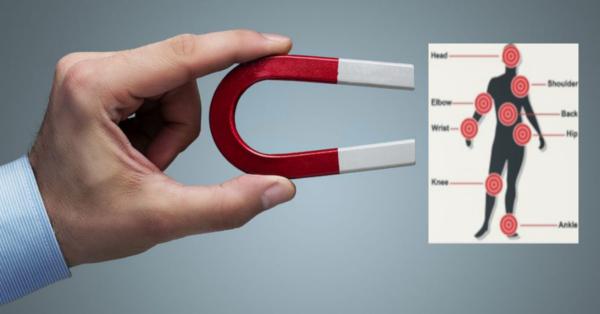Magnetic therapy is a pseudo-scientific alternative medicine practice involving a weak static magnetic fields produced by a permanent magnet. It is similar to the alternative medicine practice of electromagnetic therapy, which uses a magnetic field generated by an electrically powered device.
Practitioners claim that subjecting certain parts of the body to weak electric or magnetic fields has beneficial health effects. These physical and biological claims are unproven and no effects on health or healing have been established. Although hemoglobin, the blood protein that carries oxygen, is weakly diamagnetic (when oxygenated) or paramagnetic (when deoxygenated), the magnets used in magnetic therapy are many orders of magnitude too weak to have any measurable effect on blood flow. This is not to be confused with trans-cranial magnetic stimulation, a scientifically valid form of therapy.
Methods of application:
Magnet therapy involves applying the weak magnetic field of permanent magnets to the body, for purported health benefits. Different effects are assigned to different orientations of the magnet.
Products include magnetic bracelets and jewelry; magnetic straps for wrists, ankles, knees, and back; shoe insoles; mattresses; magnetic blankets (blankets with magnets woven into the material); magnetic creams; magnetic supplements; plasters/patches and water that has been "magnetized". Application is usually performed by the patient.
Efficacy:
Several studies have been conducted in recent years to investigate what role, if any, static magnetic fields may play in health and healing. Unbiased studies of magnetic therapy are problematic, since magnetization can be easily detected, for instance, by the attraction forces on ferrous (iron-containing) objects; because of this, effective blinding of studies (where neither patients nor assessors know who is receiving treatment versus placebo) is difficult. Incomplete or insufficient blinding tends to exaggerate treatment effects, particularly where any such effects are small. Health claims regarding longevity and cancer treatment are implausible and unsupported by any research. More mundane health claims, most commonly about anecdotal pain relief, also lack any credible proposed mechanism and clinical research is not promising.
The American Cancer Society states that "available scientific evidence does not support these claims". According to the National Center for Complementary and Integrative Health, studies of magnetic jewelry haven't shown demonstrable effects on pain, nerve function, cell growth or blood flow.
A 2008 systematic review of magnet therapy for all indications found insufficient evidence to determine whether magnet therapy is effective for pain relief, as did a 2012 review focused on osteoarthritis. Both reviews reported that small sample sizes, inadequate randomization, and difficulty with allocation concealment all tend to bias studies positively and limit the strength of any conclusions.




